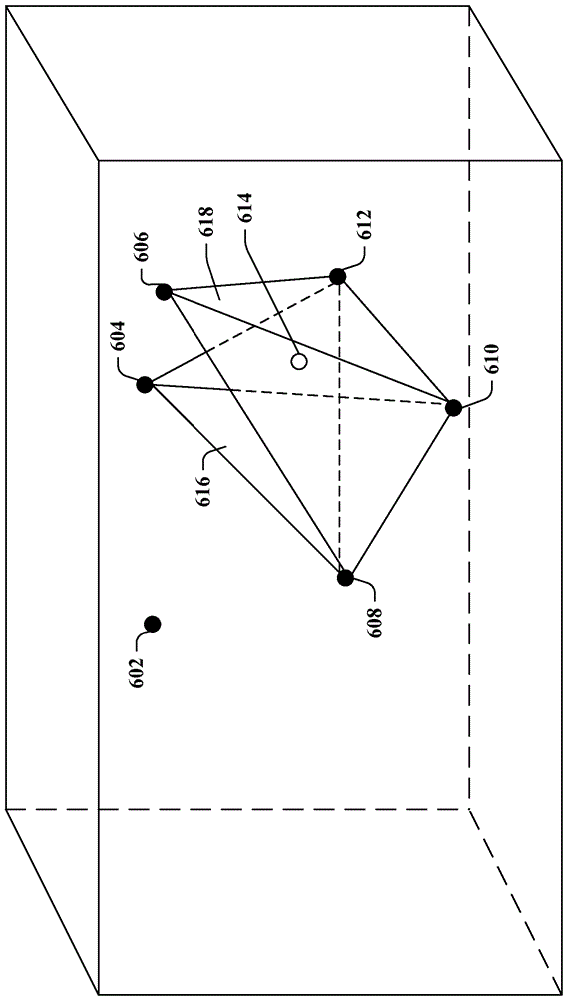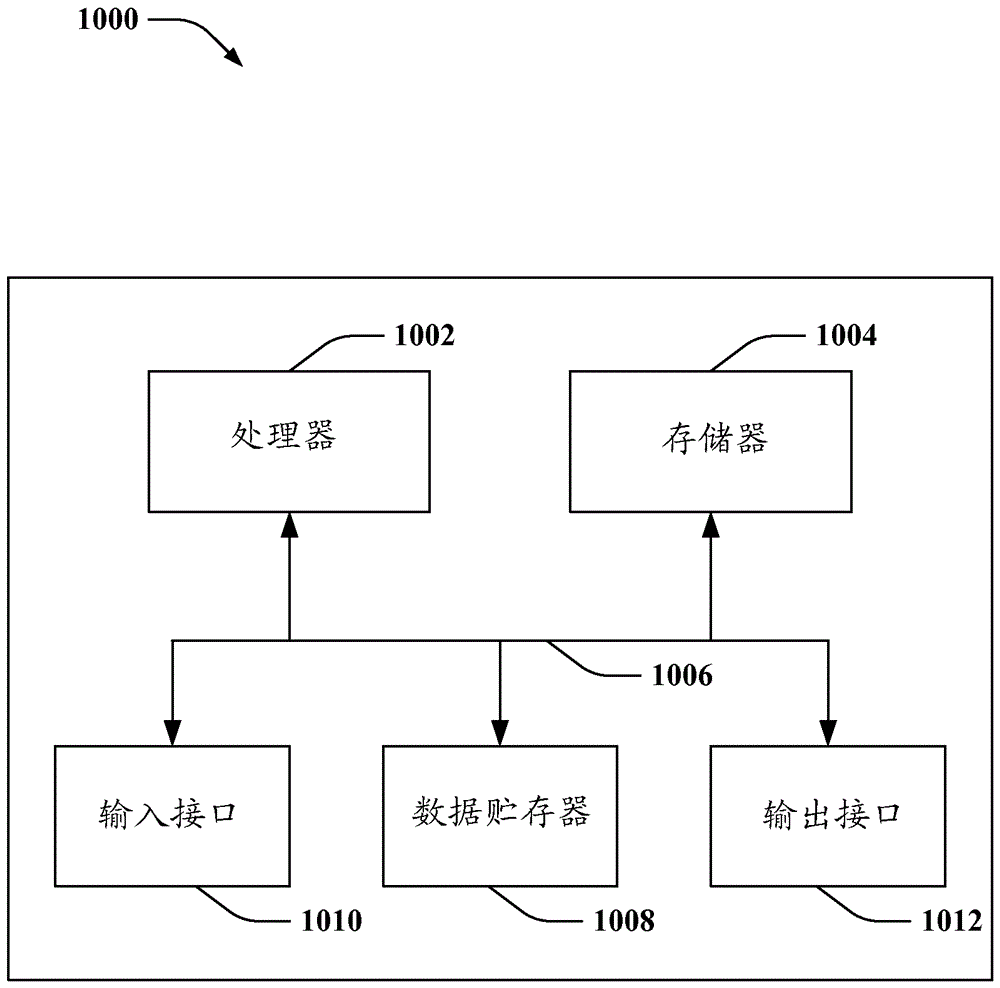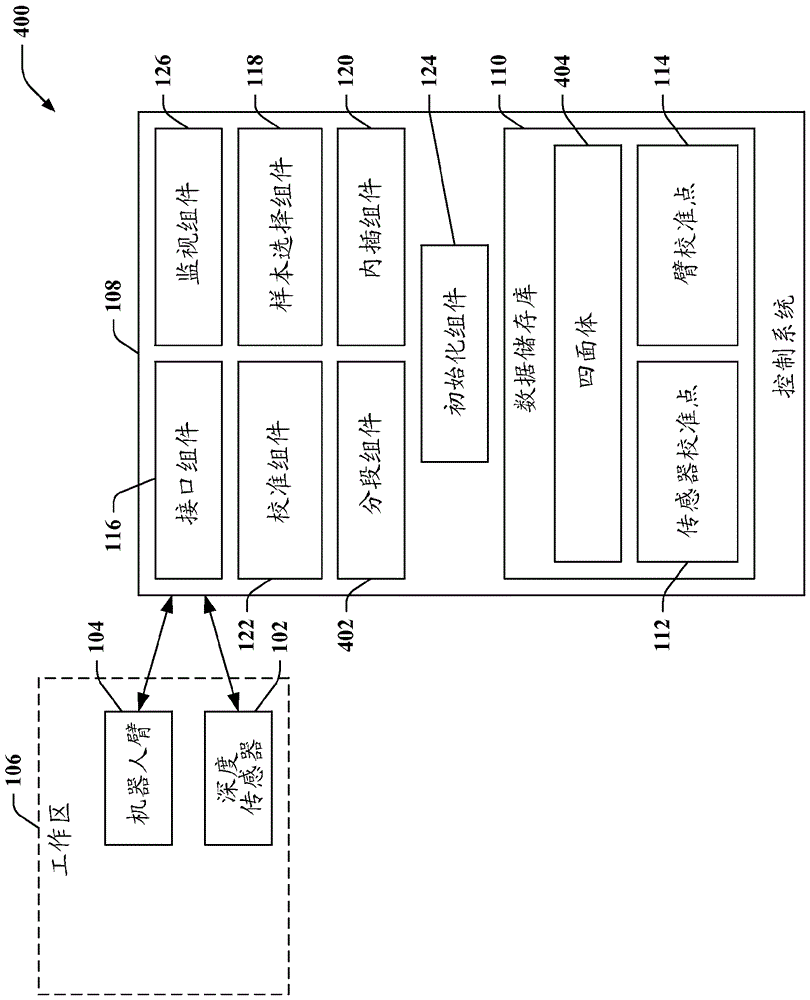Automatic in-situ registration and calibration of robotic arm/sensor/workspace system
A robot arm, sensor coordinate system technology, applied in the direction of robots, control/regulation systems, general control systems, etc., can solve problems such as less ideal ability to achieve precise placement of end effectors, and the complexity of typical methods.
- Summary
- Abstract
- Description
- Claims
- Application Information
AI Technical Summary
Problems solved by technology
Method used
Image
Examples
example 1
[0104] Example 1: A method of controlling a depth sensor and a robotic arm operating in a workspace, the robotic arm including an end effector, the method comprising: receiving an input point from the depth sensor, the input point including an indication in a sensor coordinate system The coordinates of the location of , which is in the workspace; identify the sensor calibration point in the vicinity of the input point, the sensor calibration point includes the first coordinate of the end effector in the sensor coordinate system, the first coordinate is previously in the end effector Collected during calibration at a given position within the workspace; identifying arm calibration points corresponding to sensor calibration points, respectively, including the position of the end effector in the arm coordinate system second coordinates, the second coordinates were previously collected during calibration with the end effector at a given position within the workspace; and employing ...
example 2
[0105]Example 2: The method of Example 1, further comprising performing a calibration, the performing of the calibration comprising: causing the end effector to traverse the work zone non-continuously based on a pattern, wherein the end effector operates according to the pattern stopping at positions within the zone; and at each of the positions from within the work zone at which the end effector stopped: collecting a position of the end effector within the work zone for detection by the depth sensor The sensor calibration point for the position includes the coordinates of the end effector in the sensor coordinate system at that position in the workspace; and the sensor calibration point for the end effector detected by the robot arm in the workspace The arm calibration point for a location, the arm calibration point for a location includes the coordinates in the arm coordinate system of the end effector at that location within the workspace.
example 3
[0106] Example 3: The method of Example 2, further comprising calculating a centroid based on image moments of the standard deviation image from the depth sensor, the coordinates of the sensor calibration point being the coordinates of the centroid.
PUM
 Login to View More
Login to View More Abstract
Description
Claims
Application Information
 Login to View More
Login to View More - R&D
- Intellectual Property
- Life Sciences
- Materials
- Tech Scout
- Unparalleled Data Quality
- Higher Quality Content
- 60% Fewer Hallucinations
Browse by: Latest US Patents, China's latest patents, Technical Efficacy Thesaurus, Application Domain, Technology Topic, Popular Technical Reports.
© 2025 PatSnap. All rights reserved.Legal|Privacy policy|Modern Slavery Act Transparency Statement|Sitemap|About US| Contact US: help@patsnap.com



